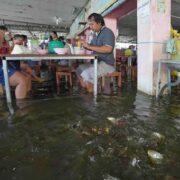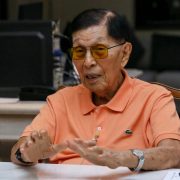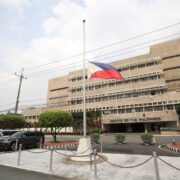‘Asean paradox’ haunts Southeast Asia’s integration

Singapore/Jakarta—The 46th Asean Summit and Related Meetings convened last month in Kuala Lumpur to much fanfare, and rightly so. The discussions yielded a range of outcomes, with the most substantive progress arguably in economic cooperation and integration.
While Asean leaders also endorsed the Kuala Lumpur Declaration on Asean 2045 and the Asean Community Vision 2045, which seeks to establish a “resilient, innovative, dynamic and people-centered Asean,” including in the realms of politics and security, the shadow of an emerging “Asean paradox” should not be overlooked.
The concept of an Asean paradox draws from the more widely known “Asian paradox”, a term once used by former South Korean president Park Geun-hye to describe the contradiction between East Asia’s economic rise and its deteriorating security environment.
The state of relations among China, Japan, South Korea, and North Korea challenges the conventional belief that deepening economic interdependence will reduce the likelihood of security conflicts, thereby advancing peace and stability.
For the most part, Asean has operated on a similar assumption that economic integration can serve as a foundation for regional peace and stability. Its notion of comprehensive security, for instance, broadens the concept of security beyond traditional military threats to encompass economic and sociocultural concerns.
Reflecting this spirit, the recent Asean meetings saw officials concluding negotiations on the Asean-China Free Trade Area 3.0 and the upgraded Asean Trade in Goods Agreement, both of which are expected to reinforce Asean’s economic resilience and strengthen regional cooperation.
The inaugural Asean Gulf Cooperation Council-China Summit focused on further ways to bolster economic integration, connectivity, energy, and food security. With aggregated economic output approaching $25 trillion and a population exceeding 2 billion people, the trilateral summit represents Asean’s ambition to assume a more prominent role in the Indo-Pacific geo-economic architecture.
In his opening remarks at the Asean Summit, host Malaysian Prime Minister Anwar Ibrahim noted that Asean’s “peace, stability, and prosperity have often depended on an open, inclusive, rules-based international order, anchored in the free flow of trade, capital, and people”.
Yet if the East Asian paradox is any indication, and considering the internal and external challenges facing Asean, it is uncertain whether these economic efforts, valuable as they are, could ultimately help to mitigate political and security tensions.
The political and security challenges confronting Asean, after all, remain rather formidable. The impact of great power relations on regional dynamics, the persistence of regional security flash points as well as Asean’s ability to respond effectively have been extensively debated. Critics argue the grouping has fallen short in addressing its salient internal and external challenges.
More importantly for Asean, the gains from its economic initiatives might not be sufficient to withstand the political and security repercussions of shifting great power dynamics. While the United States-China trade war has focused primarily on tariffs and trade imbalances, tensions in the South China Sea and the ongoing crisis in Myanmar add another layer of complexity to the regional landscape.
Philippines’ President Ferdinand R. Marcos warned at the Asean Summit that rising anxieties and uncertainty at sea, among other challenges, could threaten the hard-earned achievements of the region’s countries. Negotiations continue on the Asean-China Code of Conduct (COC) for the South China Sea, but have made little apparent headway.
Beijing has yet to make an explicit commitment to back a legally binding COC, dimming the prospect of producing a mutually agreed code by 2026. Moreover, a recent report from the ISEAS-Yusof Ishak Institute in Singapore notes that the differing positions of Asean member states on the COC talks have also hindered progress.
In brief, as much as Southeast Asian countries seek to integrate economically, they should not neglect to manage political and security tensions. Otherwise, the region risks being drawn into an Asean paradox, wherein deepening economic integration occurs alongside a worsening regional security environment.
This contradiction would, in the long run, undermine Asean’s efforts to advance economic cooperation and integration. The Jakarta Post/Asia News Network
——————
Sarah Teo is an assistant professor in the regional security architecture program at the Institute of Defense and Strategic Studies (IDSS) and coordinator of the doctoral program at the S. Rajaratnam School of International Studies (RSIS), where Iis Gindarsah was a former visiting senior fellow of the Indonesia program and is now a senior adviser at LAB 45.
——————
The Philippine Daily Inquirer is a member of the Asia News Network, an alliance of 22 media titles in the region.

















